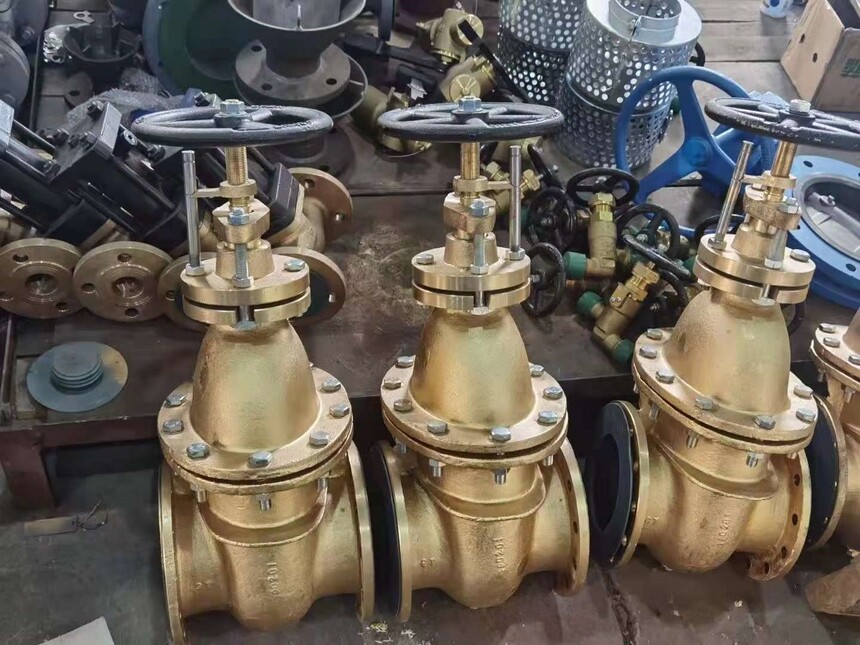|
Marine valve selection: Material and Structure selection strategies under different Working conditionsSelecting the right marine valves is critical for ensuring the safety, efficiency, and longevity of maritime operations. Marine environments expose valves to extreme conditions, including saltwater corrosion, high pressure, temperature fluctuations, and abrasive media. This guide explores how to optimize valve material and structure selection based on specific working conditions, helping engineers and procurement teams make informed decisions.
1. Understanding Marine Environment Challenges Marine valves operate in diverse settings, from offshore oil platforms to cargo ships and subsea systems. Key challenges include: Corrosion: Saltwater, humidity, and chemical-laden fluids accelerate material degradation. High Pressure & Temperature: Deep-sea applications and engine rooms demand valves resistant to extreme stress. Abrasion: Slurries, sediments, and particulate-laden fluids erode valve components. Cryogenic Conditions: LNG carriers require valves that withstand ultra-low temperatures. 2. Material Selection Strategies The right material ensures durability and performance. Below are common marine valve materials and their applications: A. Corrosion-Resistant Alloys Duplex Stainless Steel (e.g., 2205): Ideal for aggressive environments (seawater, acids). Combines high strength and corrosion resistance. Super Austenitic Steels (e.g., 904L): Suitable for chloride-rich environments, such as offshore platforms. Titanium: Lightweight and highly corrosion-resistant, perfect for subsea applications. B. Non-Metallic Materials Reinforced Plastics (e.g., PVC, CPVC): Cost-effective for low-pressure, non-critical systems (e.g., bilge pipelines). GRP (Glass-Reinforced Plastic): Withstands UV exposure and chemical attacks in ballast water systems. C. Specialized Coatings Epoxy Coatings: Prevents rust in ballast tanks and freshwater systems. Thermal Spray Aluminum (TSA): Protects valves in splash zones and tidal areas. D. Nickel Alloys Monel (Ni-Cu Alloy): Resists hydrofluoric acid and seawater, commonly used in pump valves. Inconel: Withstands high temperatures in exhaust systems and boilers. 3. Structural Design Considerations Valve structure impacts flow control, pressure handling, and maintenance frequency. Key structural features to evaluate: A. Valve Type Optimization Gate Valves: Best for on/off control in low-pressure pipelines (e.g., ballast systems). Globe Valves: Suitable for throttling applications in engine cooling systems. Ball Valves: Offer tight shutoff for fuel lines and hydraulic systems. Butterfly Valves: Compact design for large-diameter pipelines (e.g., cargo discharge). B. Sealing Technologies Metal-to-Metal Seats: For high-temperature/pressure systems (e.g., boiler feedwater). Soft Seals (e.g., PTFE, Viton): Provide leak-proof performance in non-abrasive media. Triple Offset Design: Minimizes friction in butterfly valves for extended lifespan. C. Pressure & Temperature Ratings Class Ratings (ANSI/ASME): Select valves rated 1.5–2x the operating pressure for safety margins. Cryogenic Designs: Use extended bonnets and specialized gaskets for LNG/LPG applications. D. Anti-Cavitation Features Multi-Stage Trim: Reduces pressure drops in throttling valves to prevent erosion. 4. Working Condition-Specific Recommendations A. Subsea Applications Materials: Titanium or super duplex steel. Structure: Trunnion-mounted ball valves with metal seats for deep-sea pressure. B. Ballast Water Treatment Materials: GRP or coated steel. Structure: Butterfly valves with corrosion-resistant discs. C. Engine Exhaust Systems Materials: Inconel or silicon bronze. Structure: Globe valves with reinforced stems for thermal shock resistance. D. Cargo Transfer (Crude Oil/Chemicals) Materials: Hastelloy or lined steel. Structure: Full-bore ball valves with fire-safe designs. 5. Maintenance & Lifecycle Costs Predictive Maintenance: Opt for valves with wear indicators (e.g., stem position sensors). Replaceable Liners: Extend lifespan in abrasive environments (e.g., slurry pipelines). Certifications: Ensure compliance with ABS, DNV, or Lloyd’s Register standards. 6. Case Study: Offshore Drilling Platform A North Sea platform required valves for seawater intake (5°C, 30 bar). Solution: Material: Super duplex steel (2507) for chloride resistance. Structure: Double-eccentric butterfly valves with EPDM seats. Outcome: Zero failures over 5 years, reducing maintenance costs by 40%. Conclusion Marine valve selection demands a balance between material durability, structural integrity, and operational demands. By analyzing corrosion risks, pressure/temperature extremes, and maintenance requirements, engineers can specify valves that optimize performance and minimize lifecycle costs. Always consult manufacturers’ guidelines and industry standards (e.g., API 6D, ISO 10497) to ensure compliance. |

